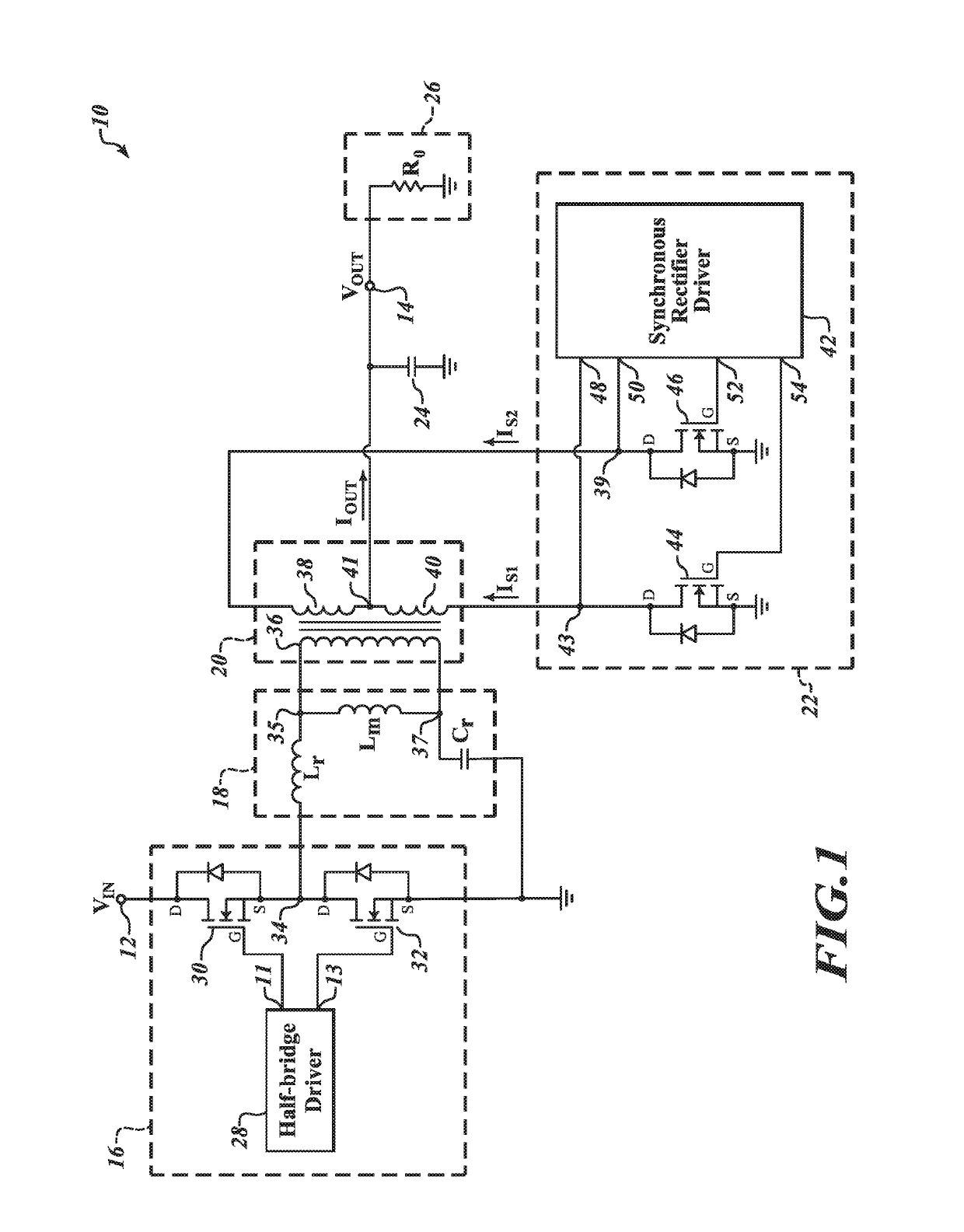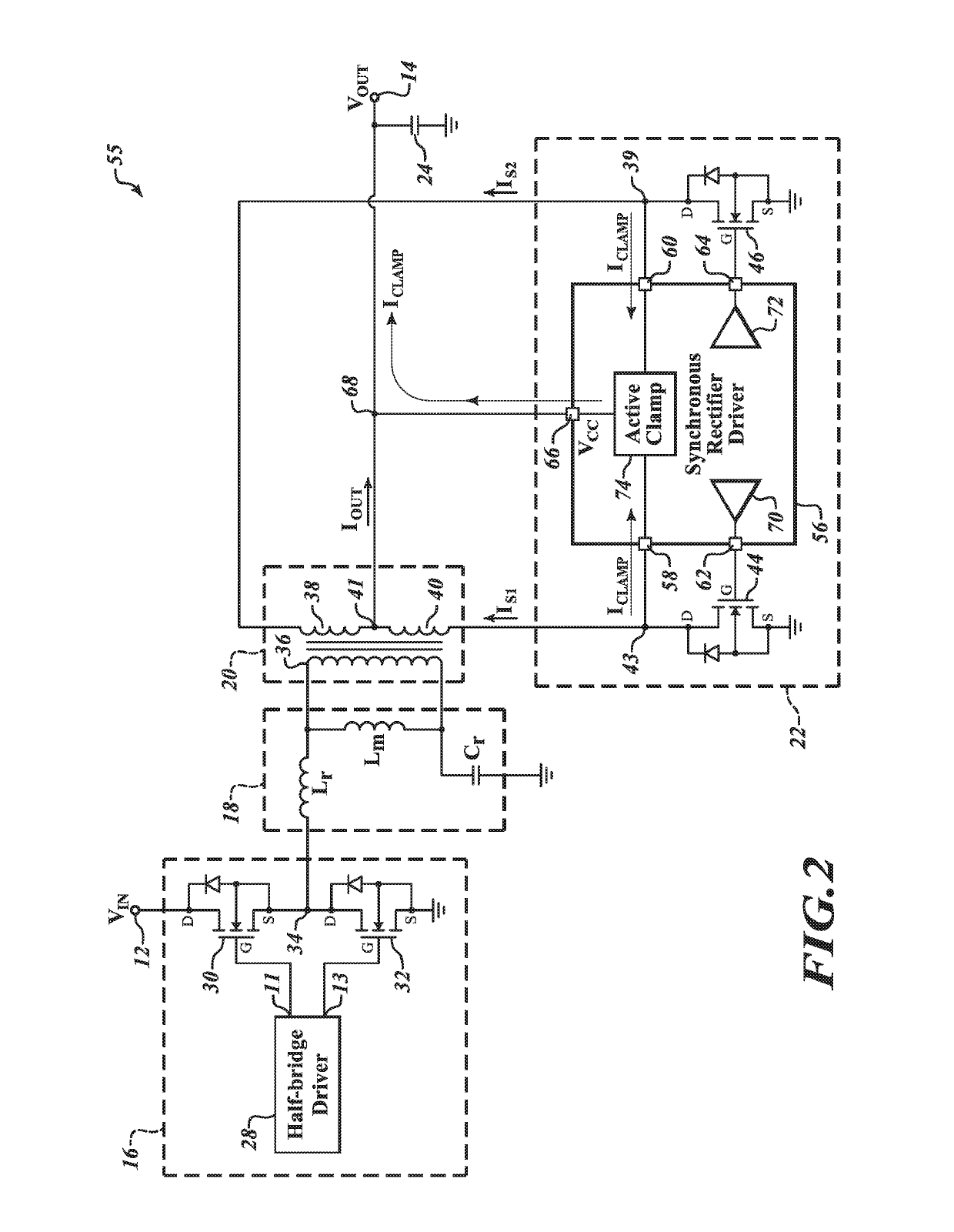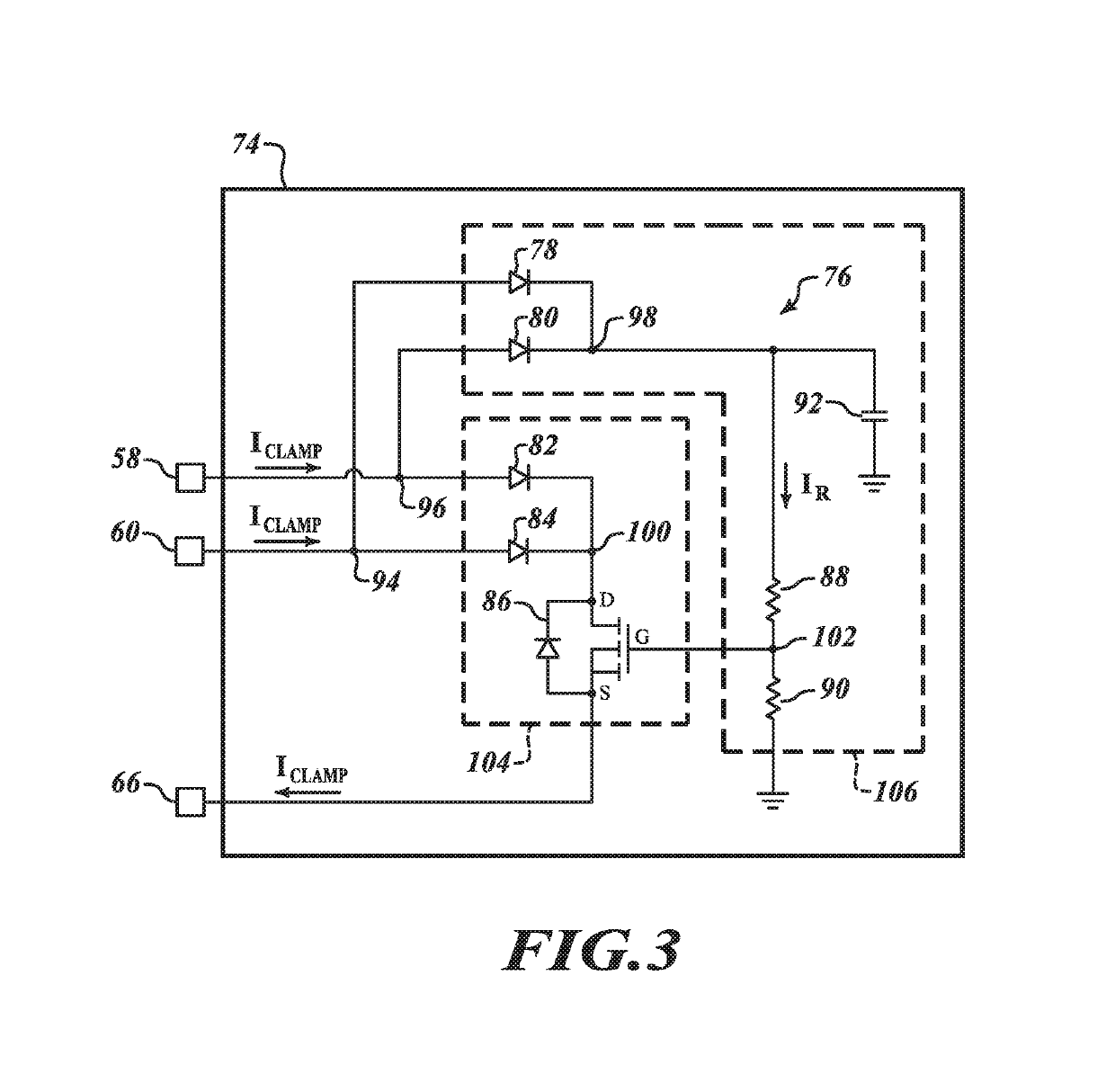Synchronous rectifier gate driver with active clamp
- Summary
- Abstract
- Description
- Claims
- Application Information
AI Technical Summary
Benefits of technology
Problems solved by technology
Method used
Image
Examples
first embodiment
[0054]FIG. 3 shows a detailed diagram of the active clamp 74, disclosed herein. In the embodiment shown in FIG. 3, the active clamp 74 includes circuitry 76. The circuitry 76 includes a first diode 78, a second diode 80, a third diode 82, a fourth diode 84, a transistor 86, a first resistor 88, a second resistor 90, and a capacitor 92. The first input 58 of the synchronous rectifier driver 56 is electrically coupled to a node 96 of the circuitry 76, the second input 60 of the synchronous rectifier driver 56 is electrically coupled to a node 94 of the circuitry 76, and the third output 66 of the synchronous rectifier driver 56 is electrically coupled to a source of the transistor 86.
[0055]The first diode 78 is electrically coupled between the node 94 and a node 98, the second diode 80 is electrically coupled between the node 96 and the node 98, the third diode 82 is electrically coupled between the node 96 and a node 100, and the fourth diode 84 is electrically coupled between the n...
third embodiment
[0069]For applications in which the voltages at the drains of the transistor 44, 46 (VDVS44, VDVS46) have very fast commutation times, the clamping module 104 of the active clamp 74 may be activated dynamically using a driving module. FIG. 5 shows a detailed diagram of the active clamp, disclosed herein. In the embodiment shown in FIG. 5, the active clamp 74 includes circuitry 116. Similar to the circuitry 76 shown in FIG. 3, the circuitry 116, specifically the clamping module 104, includes the third diode 82, the fourth diode 84, and the transistor 86. However, in contrast to the circuitry 76, the threshold setting module 106 is replaced with a driving module 118.
[0070]The driving module 118 includes a diode 120, a capacitor 124, and a driver 126. The gate of the transistor 86 is electrically coupled to a node 128. The diode 120 is electrically coupled between the node 128 and the third output 66 of the synchronous rectifier driver 56. The capacitor 124 is electrically coupled bet...
fourth embodiment
[0080]In the fourth embodiment, the maximum voltage at the drain of the transistor 44 may be calculated using equation (18):
VDVS44=Vext+VTH132+VD82 (18)
where VDVS44 is the voltage at the drain of the transistor 44, Vext is the external voltage applied at the third input 134, VTH132 is a voltage threshold of the transistor 132, and VD82 is the voltage drop on the third diode 82. Similarly, the maximum voltage at the drain of the transistor 46 may be calculated using equation (19):
VDVS46=Vext+VTH132+VD84 (19)
where VDVS46 is the voltage at the drain of the transistor 46, Vext is the external voltage applied at the third input 134, VTH132 is a voltage threshold of the transistor 132, and VD84 is the voltage drop on the fourth diode 84.
[0081]In one embodiment, the external voltage Vext is set to be twice the output voltage VOUT. The external voltage Vext may be calculated using equation (20):
Vext=2·VOUT (20)
In this embodiment, the maximum voltage at the drain of the transistor 44 may ...
PUM
 Login to View More
Login to View More Abstract
Description
Claims
Application Information
 Login to View More
Login to View More - R&D
- Intellectual Property
- Life Sciences
- Materials
- Tech Scout
- Unparalleled Data Quality
- Higher Quality Content
- 60% Fewer Hallucinations
Browse by: Latest US Patents, China's latest patents, Technical Efficacy Thesaurus, Application Domain, Technology Topic, Popular Technical Reports.
© 2025 PatSnap. All rights reserved.Legal|Privacy policy|Modern Slavery Act Transparency Statement|Sitemap|About US| Contact US: help@patsnap.com



